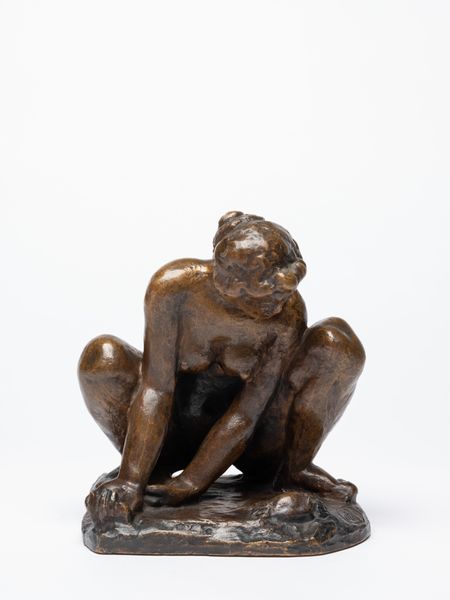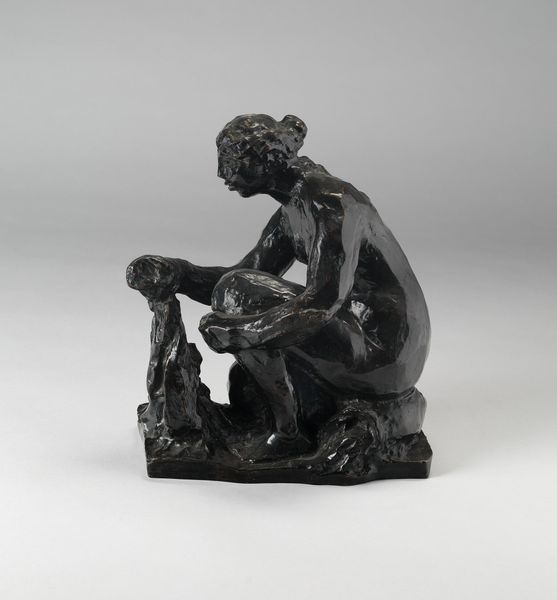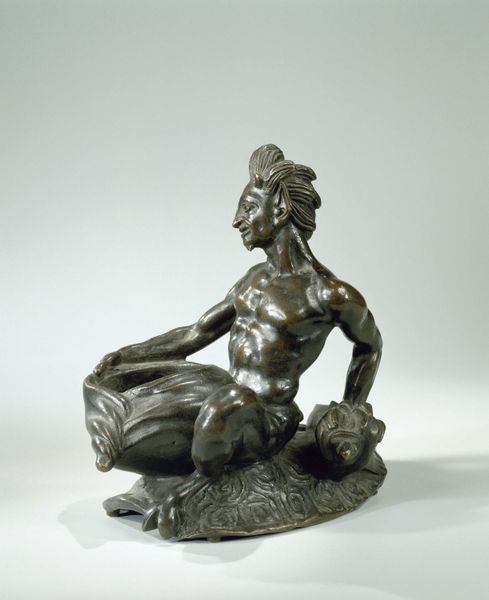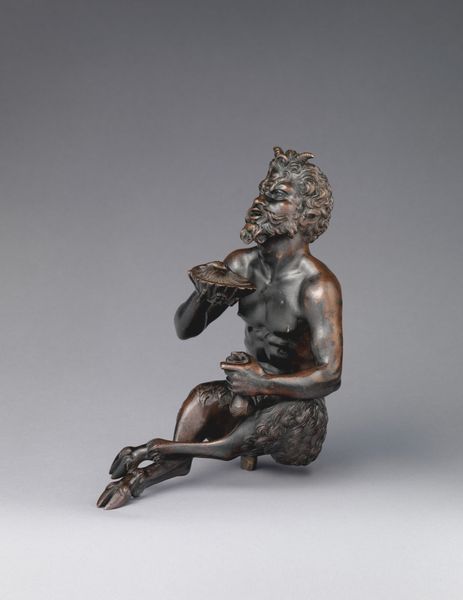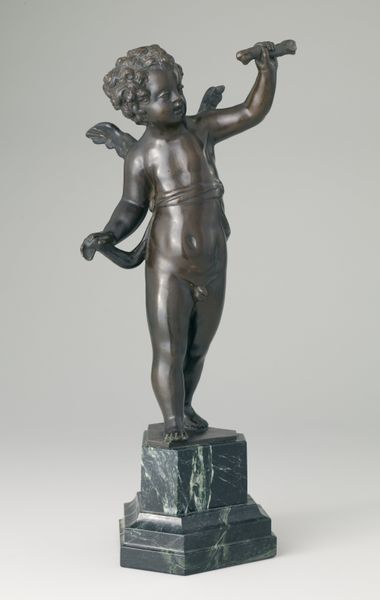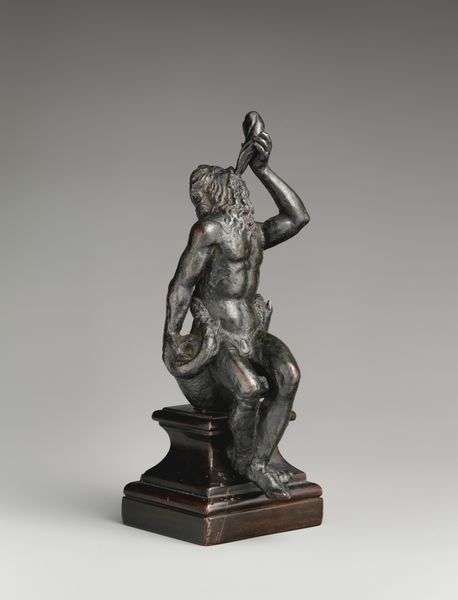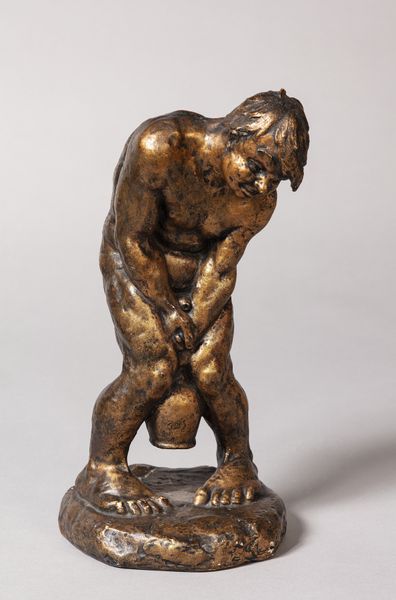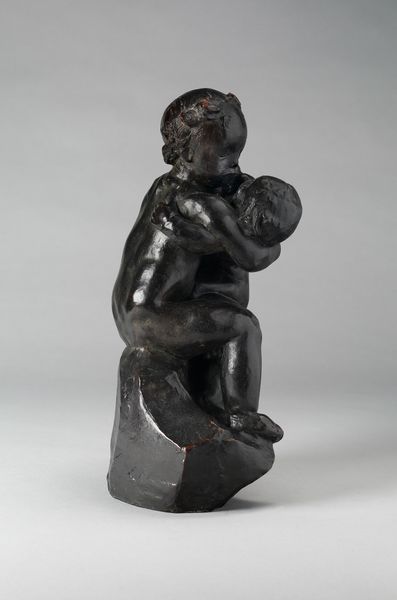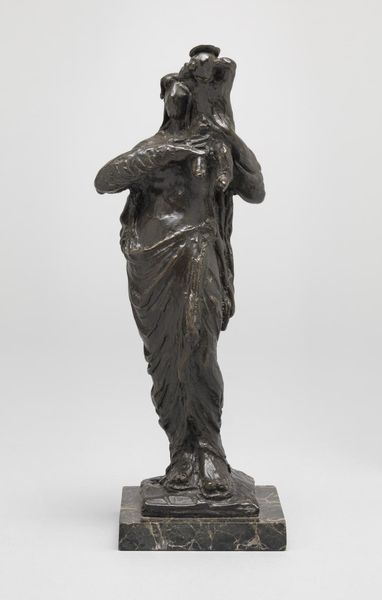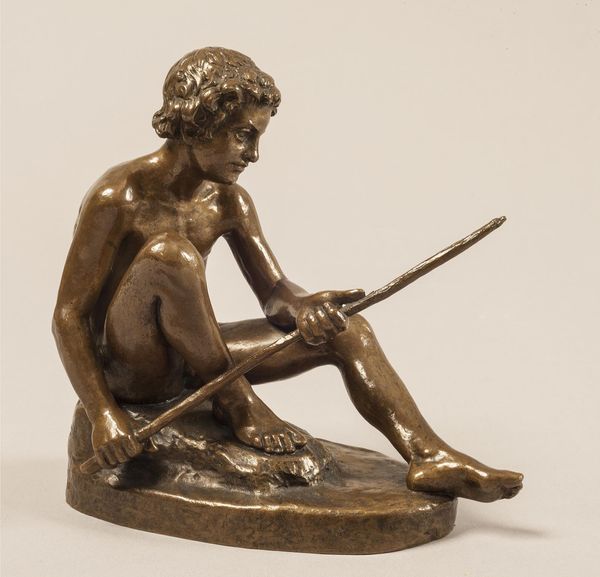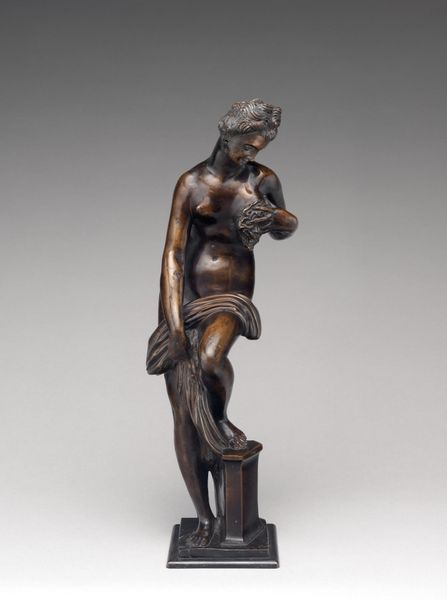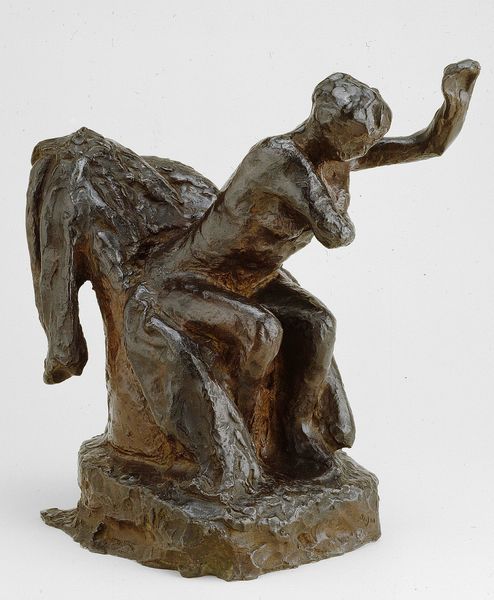
Dimensions: object: 1210 x 749 x 1289 mm
Copyright: CC-BY-NC-ND 4.0 DEED, Photo: Tate
Editor: Here we have Auguste Renoir's sculpture, "The Washerwoman," date unknown, currently housed at the Tate. It's a bronze figure depicting a woman kneeling and wringing out a cloth. What strikes me is how monumental it feels despite its intimate subject matter. What do you see in it? Curator: I see Renoir engaging with the idealized female form while simultaneously depicting the realities of labor. The sculpture prompts us to consider how women's bodies have been historically represented in art, often divorced from the context of their daily lives and the social structures that constrain them. What tensions do you observe between the aesthetic presentation and the subject's implied socio-economic status? Editor: That's a perspective I hadn't considered. It really highlights the complexities of representation. Curator: Exactly. It challenges us to examine whose stories are told and how.
Comments
Join the conversation
Join millions of artists and users on Artera today and experience the ultimate creative platform.
tate 8 months ago
⋮
Renoir started to make sculpture only late in his life. Because his hands were crippled with arthritis, 'The Washerwoman' was modelled under Renoir's direction by the young sculptor Richard Guino. Renoir supplied drawings for Guino to translate into sculpture, and several smaller intermediate studies of 'The Washerwoman' were made. It was originally intended as one half of a pair of large figures with the subjects 'Fire' and 'Water', to be symbolised by a blacksmith and a washerwoman respectively. However, relations between Renoir and Guino became strained, and the project was never completed. Gallery label, September 2004
